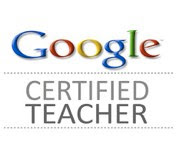Dear Future Educator,
Welcome to a challenging, creative and meaningful life journey. Although teaching is a way to earn a living, it is not a job. Teaching is a craft. Like any artist, you will spend your entire life obsessing over and honing your work.
•Find a mentor. Seek out a teacher or teachers you admire, someone whose classroom appeals to you. Learn from them.
•Learn from everyone. Copy what you like. Avoid what you don't like. Adapt things so they work for your students.
•Become reflective. When something goes badly, treat it like a puzzle to solve. Write about it. Talk about it. Ask your students about it. Do it over in a different way.
•Know yourself. You will bring your core values into your classroom so know where you stand and what you believe.
•As you are learning from everyone, being reflective about your teaching and knowing your core values, celebrate yourself as a learner. Share your learning with others, especially your students. Be in love with learning. Study it. As you learn new things, pay attention to how you learn them.
 |
| http://www.flickr.com/photos/duaneschoon/4530185934/ |
•Practice what you teach. If you teach reading and writing, read and write. Stay current with your subject or subjects. It is not enough that you graduated from college. That is just the beginning.
•Work within your circle of influence. The circle of influence is an idea from Stephen Covey's, 7 Habits of Highly Effective People. Highly effective people are proactive. Proactive people focus on things over which they have control. As a teacher there will be many things over which you have no control. Spend your energy on those things that you can control.
•Be prepared to work very hard. Be prepared for people to not understand how hard you work. Try not to take it personally when people say things like, "How great that you get your summers off" or "Teaching- how noble" or when people think you are patient just because you are a teacher.
•Take care of yourself. You are the conductor of energy in the room so your energy matters. Get enough sleep. Find time to exercise and relax. Have a life outside of teaching.
Your craft is the art of learning. And learning is the art of living.
Teaching is not easy. You might sometimes wish you worked at the carwash instead.
But remember that you are touching lives.
What advice do you have for future teachers? Please add your thoughts.







